Imperial Lineage: A Millennial Atlas of Confucian Orthodoxy”(Diwang Daotong Wan Nian Tuce)
Overview
This 20-panel silk album, painted by Qiu Ying (仇英, 1494–1552) of the Ming Dynasty, is a visual chronicle of China’s mytho-historical rulers from Fuxi (伏羲, the legendary creator of the I Ching) to Emperor Renzong of Song (宋仁宗, 1022–1063). Commissioned by the scholar-official Gu Kexue (顧可學, 1472–1560), it served as both a political tool to curry imperial favor and a philosophical manifesto reinforcing Confucian governance. Now housed in Taipei’s National Palace Museum, the work exemplifies Ming-era synthesis of art, history, and state ideology.
Artistic Features
- Technique & Style:
- Executed in gongbi (工笔, meticulous brushwork) with malachite green and gold accents, the paintings employ Tang-inspired decorative grandeur. However, incomplete pigments in panels like Sieving Clay (筛土) suggest rushed production due to urgent patronage demands.
- Architectural elements (e.g., Han palaces, Song pavilions) are rendered with perspective-free precision, prioritizing symbolic hierarchy over realism—a hallmark of Ming court art.
- Text-Image Dialogue:
- Each ruler’s portrait faces Gu Kexue’s seal-script commentaries (篆书题记), which quote classical texts like the Shangshu (尚书, Book of Documents) and Shiji (史记, Records of the Grand Historian). For example:
- Fuxi Panel: Quotes the I Ching to link his invention of the Bagua (八卦, Eight Trigrams) to cosmic order.
- Yu the Great Panel: Cites flood-control myths to frame governance as a divine mandate.
- Each ruler’s portrait faces Gu Kexue’s seal-script commentaries (篆书题记), which quote classical texts like the Shangshu (尚书, Book of Documents) and Shiji (史记, Records of the Grand Historian). For example:
- Comparative Context:
- Unlike Qiu Ying’s lavish Han Palace Spring Morning (汉宫春晓), this album’s restrained palette reflects its didactic purpose. Similar to The Porcelain Production and Transport Paintings (瓷器制运图), it blends technical detail (e.g., pottery wheels, kiln designs) with ideological messaging.
Key Panels & Historical Context
- Mythical Sage-Kings (Panels 1–7):
- Fuxi (伏羲): Depicted observing celestial patterns to create the Bagua, symbolizing the ruler’s role as mediator between heaven and earth.
- Shennong (神农): Shown tilling soil with a wooden plow, embodying Confucian ideals of agrarian virtue. Gu’s commentary cites the Mencius to stress “teaching the people cultivation”.
- Yu the Great (禹): His flood-control feats (八年於外, “eight years abroad”) parallel Ming statecraft debates on hydraulic engineering’s political significance.
- Imperial Legitimacy (Panels 8–16):
- Zhou Dynasty Rituals: The Duke of Zhou (周公) panel highlights divination practices (卜兆) to legitimize capital选址, echoing Ming debates on geomancy (fengshui).
- Han Emperors:
- Emperor Gaozu of Han (汉高祖) worshipping Confucius underscores Ming revival of Ruist (儒) orthodoxy.
- Emperor Ming of Han (汉孝明皇帝) receiving foreign envoys mirrors Ming interactions with Jesuit missionaries.
- Neo-Confucian Climax (Panels 17–20):
- Zhu Xi (朱熹): The Song philosopher’s lecture at the Imperial Academy symbolizes Ming adoption of Lixue (理学, Rationalist School). Gu’s commentary notes “8,000 scholars attended,” reflecting late-Ming educational reforms.
- Song Renzong: His call to “write the Wuyi chapter on screens” (屏书无逸) critiques Jiajing Emperor’s extravagance through historical analogy.
Patronage & Political Subtext
- Qiu Ying’s Role:
- A master of the Wu School (吴门), Qiu balanced commercial demands (e.g., Suzhou’s art market) with literati aesthetics. His collaboration with Gu—a disgraced official seeking rehabilitation—reveals Ming art’s entanglement with bureaucratic politics.
- Gu Kexue’s Agenda:
- As a jinshi (进士) exiled for corruption, Gu used the album to advocate for meritocratic governance. His commentaries subtly contrast idealized ancient rulers with Ming decadence—a strategy seen in The Porcelain Production and Transport Paintings’ critique of Qing trade policies.
Cultural Footnotes for Western Readers
- “China” as Etymological Legacy: The term derives from Changnan (昌南, Jingdezhen’s ancient name), popularized by Persian traders. This album’s focus on Jingdezhen-linked emperors (e.g., Song Renzong) reinforces porcelain’s symbolic ties to state power.
- Azure-and-Gold Aesthetics: The color scheme mirrors Tang dynasty qinglü山水 (青绿山水, blue-green landscapes), revived in Ming to assert cultural continuity post-Mongol rule.
- Mandate of Heaven (天命): Central to all panels, this doctrine justified dynastic cycles—a concept paralleling European “divine right of kings” but with cosmic accountability.
Legacy & Modern Relevance
This album bridges pre-modern historiography and Renaissance-era European emblem books, offering comparative insights into how art legitimized power. Its blend of technical precision (e.g., pottery wheel mechanics) and ideological storytelling prefigures modern infographics—a “data visualization” of Confucian statecraft.


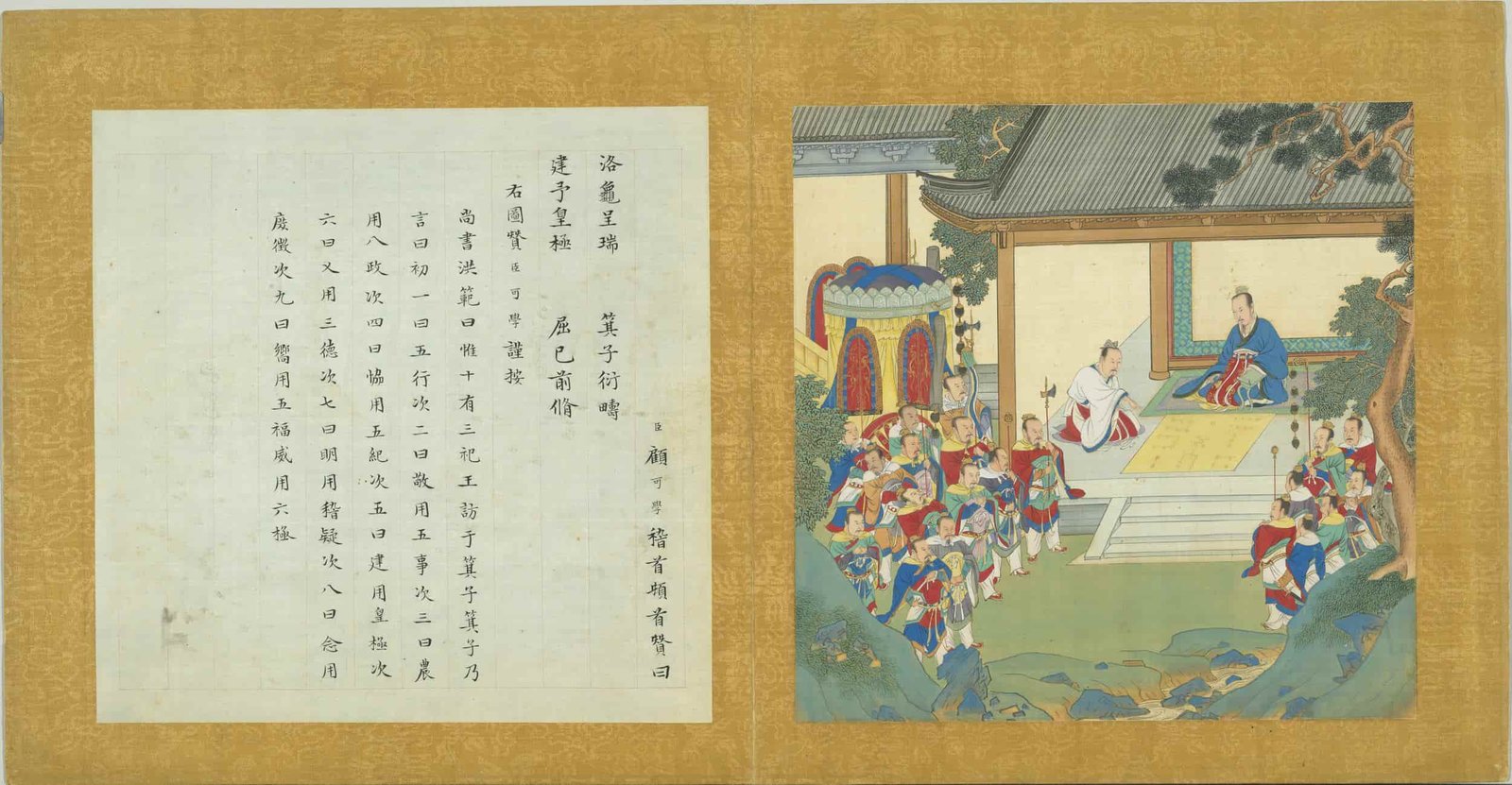
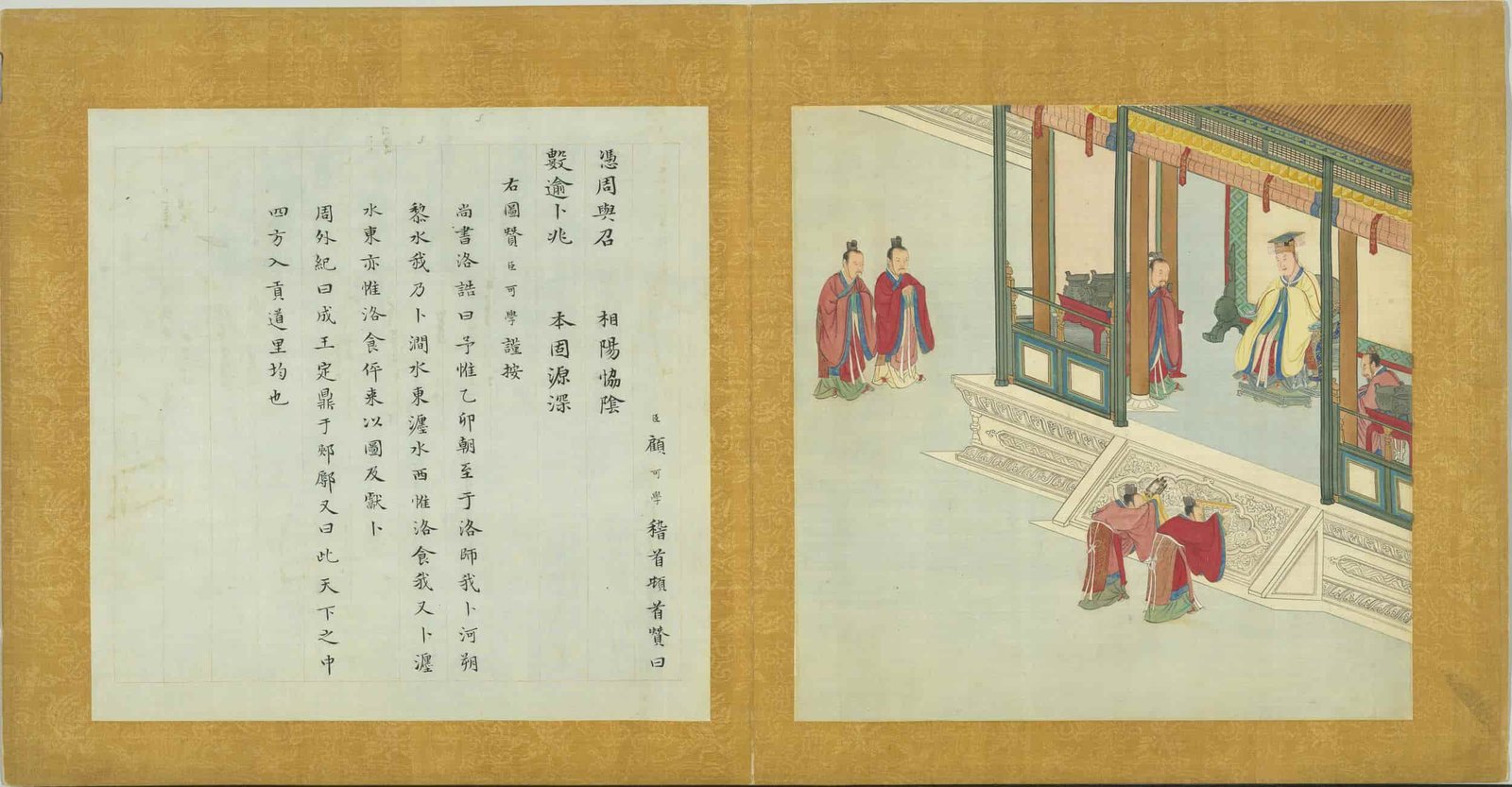

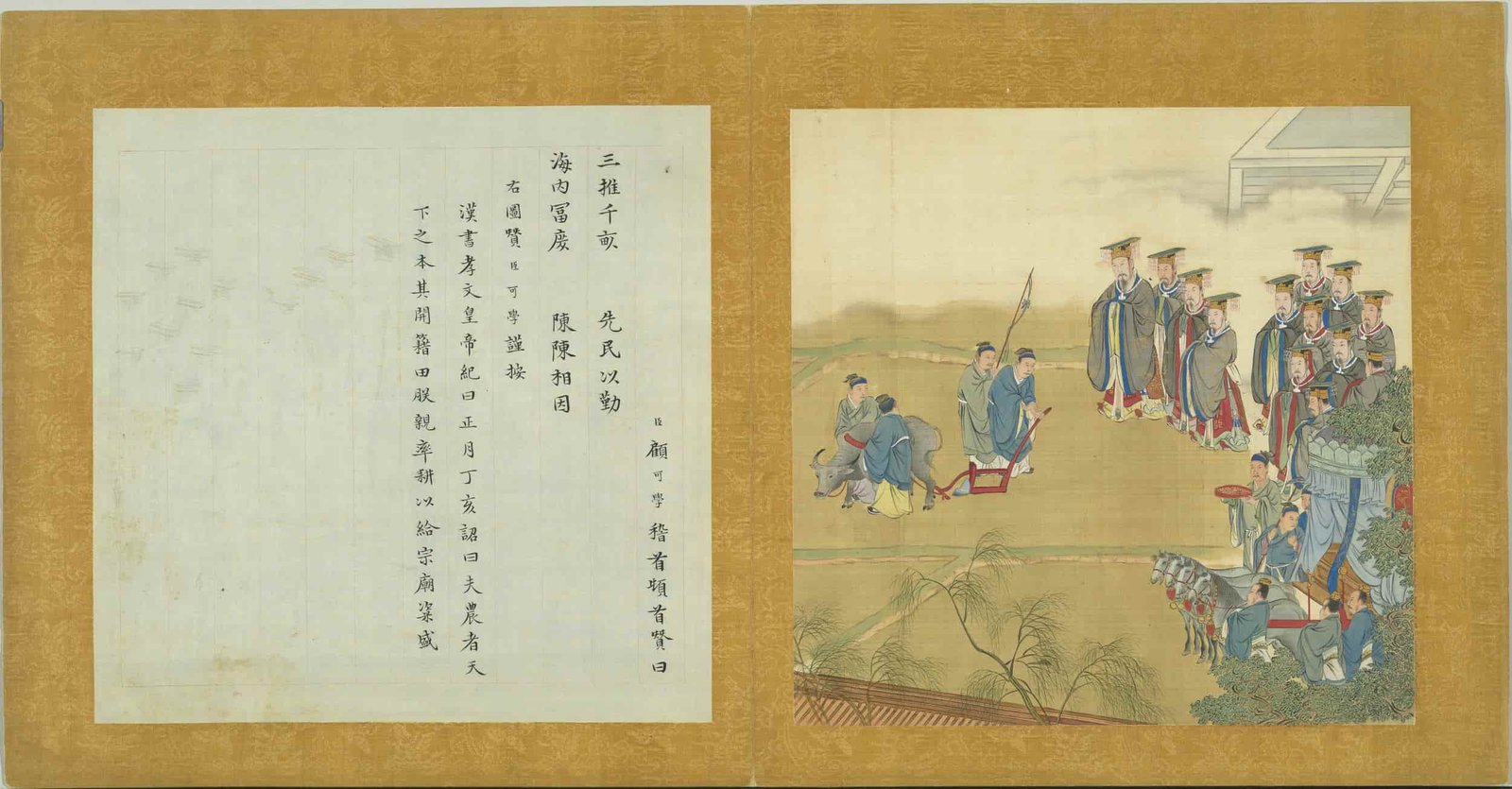
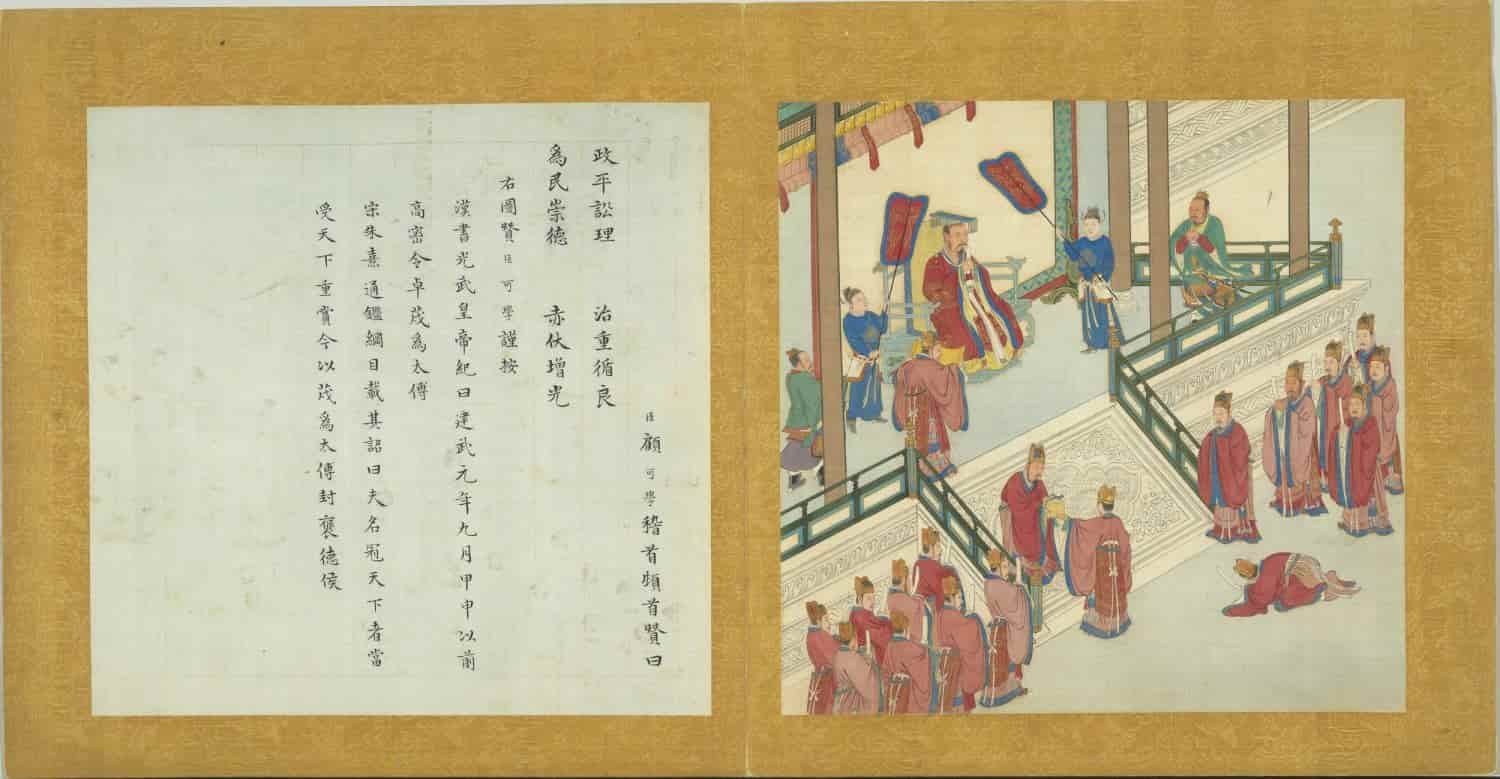
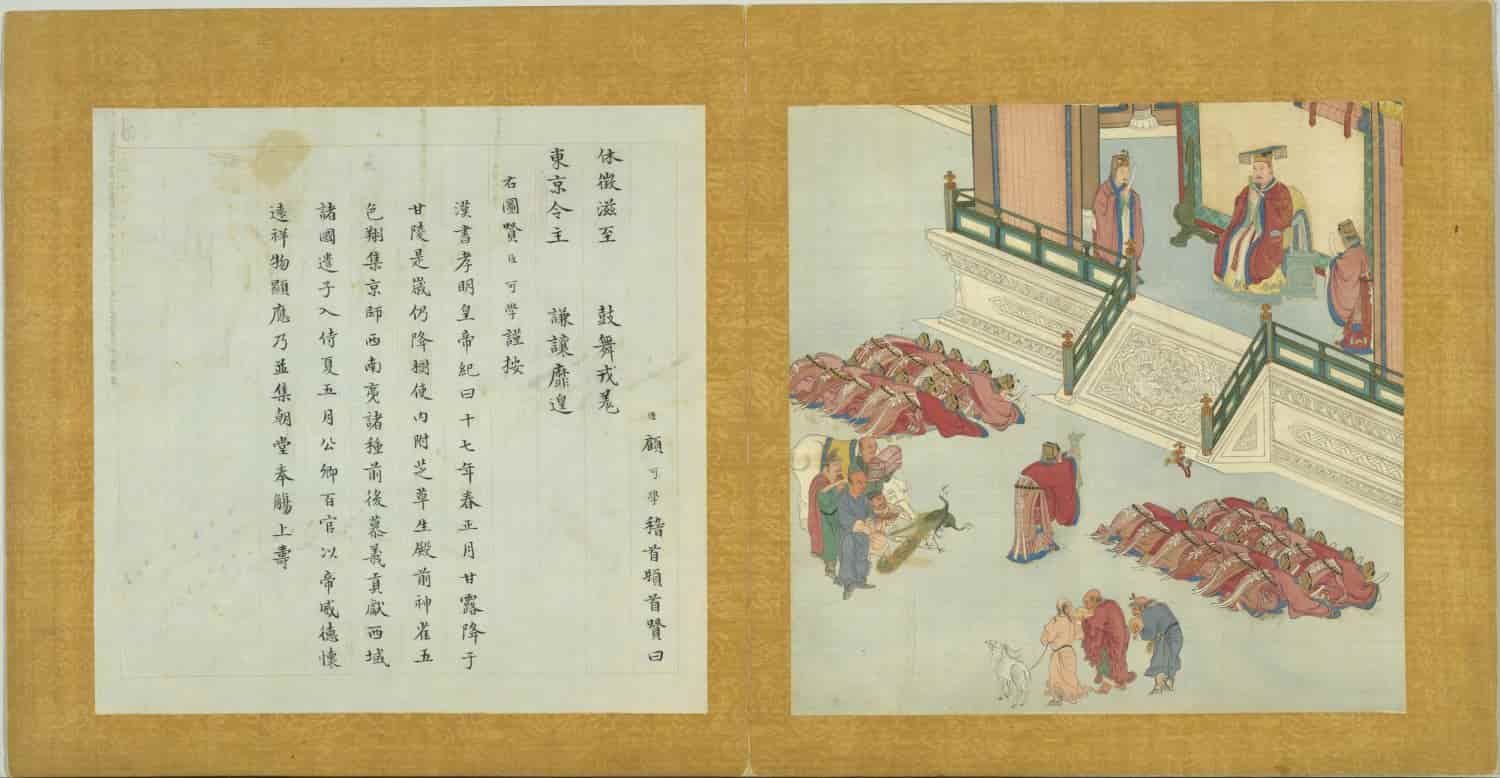
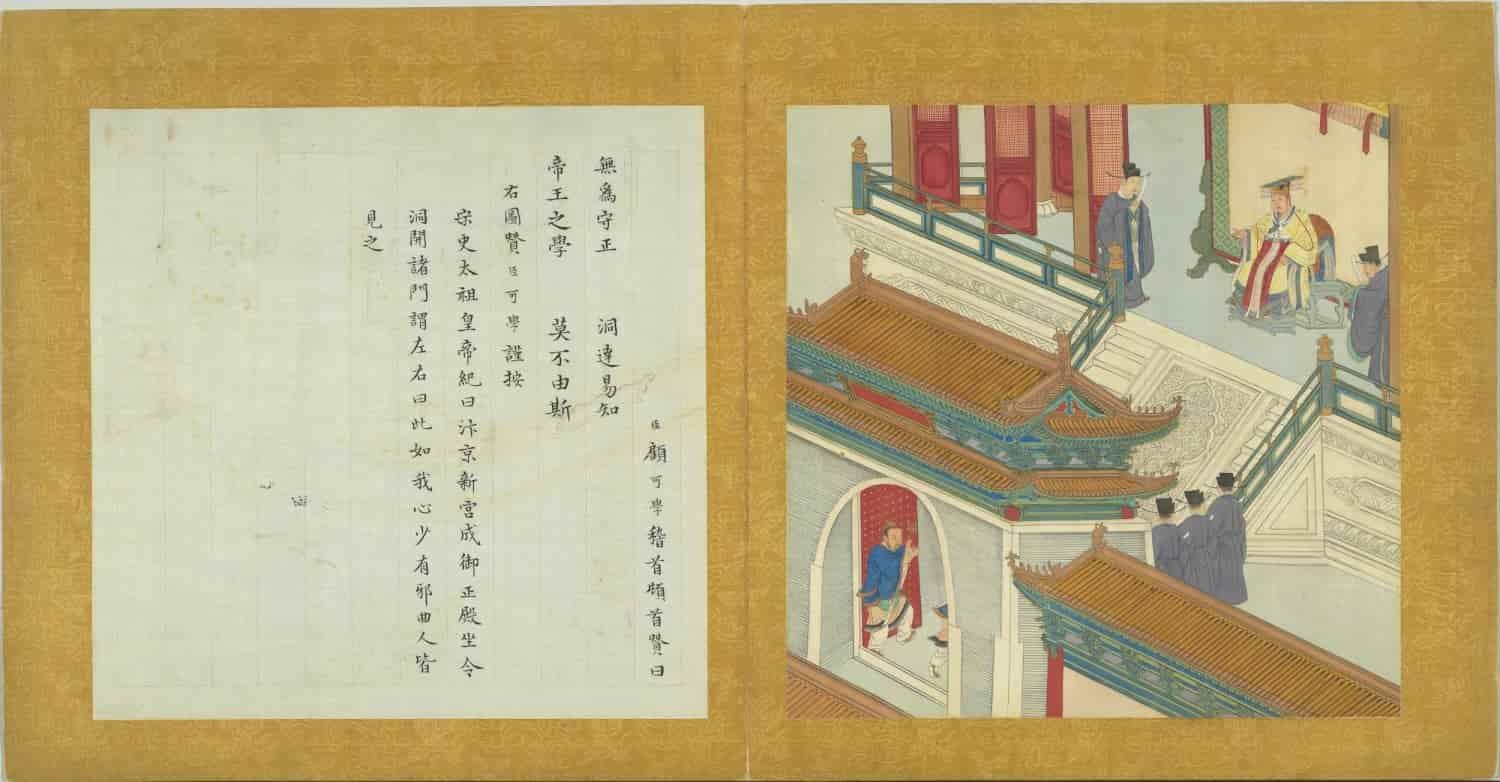
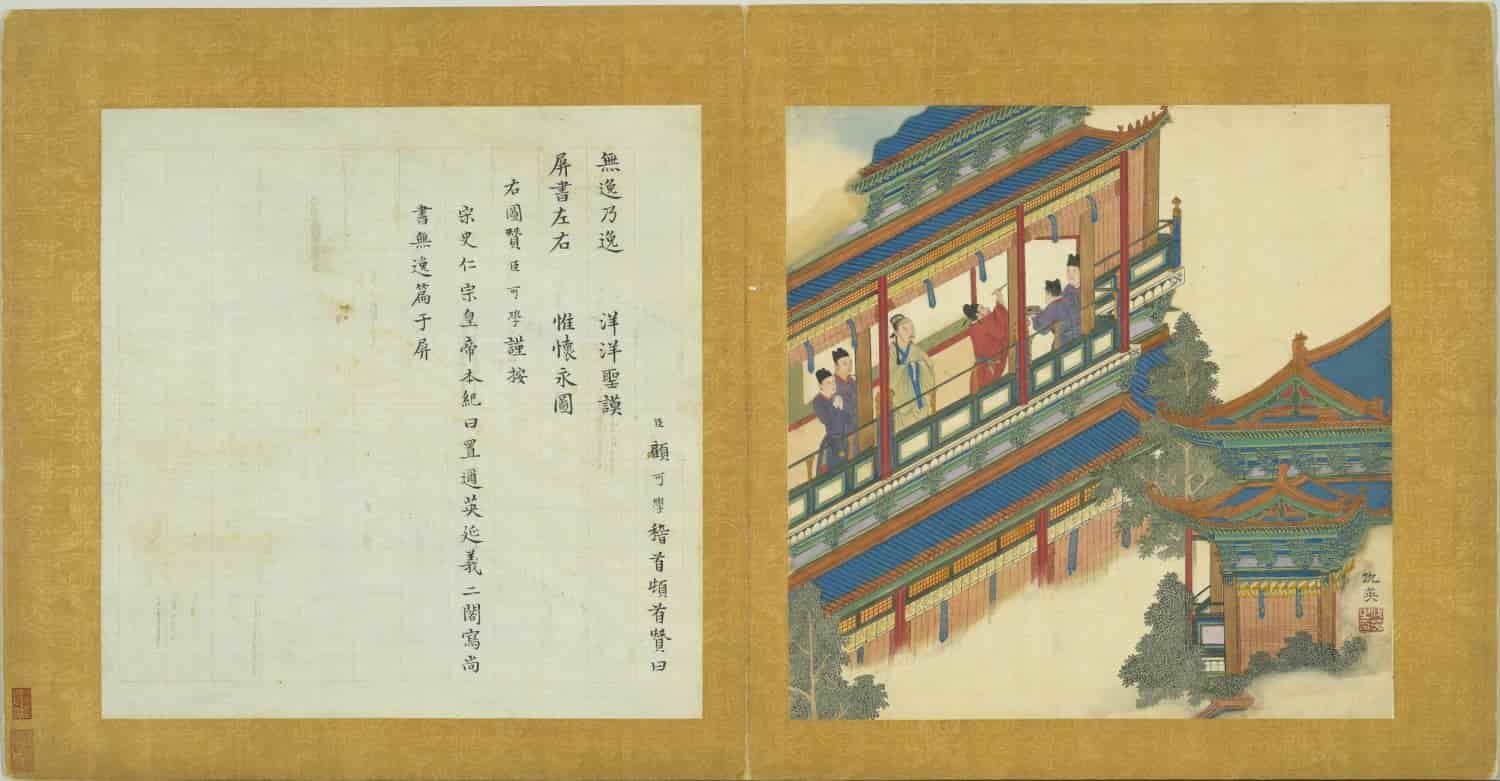
评价
目前还没有评价